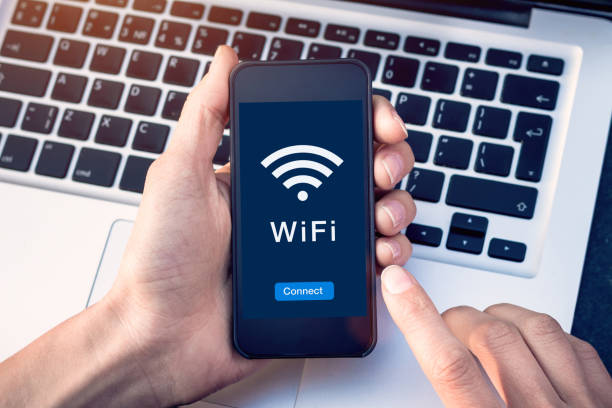In today’s fast-paced world, staying connected is more important than ever. Whether you are traveling for business or pleasure, having access to reliable internet is very important. Portable Wi-Fi devices have transformed the way we stay connected on the go. In this article, we will explore the best ways to get portable Wi-Fi and how you can choose the right device for your needs. Let’s dig in!
Introduction
Portable Wi-Fi, also known as mobile Wi-Fi or Mi-Fi, is a compact device that allows you to connect to the internet wirelessly, anytime and anywhere. Unlike traditional Wi-Fi routers, these devices are small, lightweight, and easily transportable, making them ideal for travelers, remote workers, and anyone who needs internet access on the go.
Understanding the Need for Portable Wi-Fi
It is important to understand the need for portable Wi-Fi in today’s connected world, where staying online is more than just a convenience—it’s a necessity. It offers several benefits that make it indispensable for various situations:
Convenience and Accessibility
It provides users with the flexibility to access the internet from virtually anywhere. Whether you’re at a coffee shop, in a hotel room, or on public transportation, having your own Wi-Fi connection means you’re not reliant on potentially insecure or unreliable public networks.
Travel and Remote Work
For travelers and remote workers, portable Wi-Fi is a lifeline. It allows individuals to stay connected while on the move, whether they’re exploring a new city, working from a co-working space, or attending meetings remotely. With this, you can access emails, attend virtual meetings, and collaborate with colleagues from anywhere with a cellular signal.
Cost Savings
Portable Wi-Fi can also offer significant cost savings compared to traditional methods of accessing the internet while traveling. Rather than paying expensive roaming charges or relying on hotel Wi-Fi, travelers can opt for portable devices with affordable data plans tailored to their needs.
Flexibility for Multiple Devices
These portable devices typically support multiple connections, allowing users to connect smartphones, laptops, tablets, and other Wi-Fi-enabled devices simultaneously. This flexibility makes it easy for families, friends, or colleagues to share a single internet connection without the need for additional subscriptions or fees.
Security and Privacy
Well, using a personal portable Wi-Fi network adds an extra layer of security and privacy compared to public Wi-Fi networks, which are often targeted by hackers and cybercriminals. With portable devices, users can encrypt their connections and protect sensitive information, such as passwords, financial data, and personal emails, from unauthorized access.

Exploring Different Types of Portable Wi-Fi Devices
There are several types of portable Wi-Fi devices available on the market, each with its own unique features and capabilities.
Portable Wi-Fi Hotspots
Portable Wi-Fi hotspots are standalone devices that create a Wi-Fi network wherever you are. They typically use a SIM card to connect to the internet and can support multiple devices simultaneously.
Pocket Wi-Fi Devices
Pocket Wi-Fi devices are compact, battery-powered devices that fit easily into your pocket or bag. They work similarly to portable Wi-Fi hotspots and offer the convenience of internet access on the go.
USB Dongles for Wi-Fi
USB dongles are small devices that plug into your laptop or tablet’s USB port and provide internet access via a mobile network. While not as portable as other options, USB dongles are convenient for users who primarily need internet access on their laptop or tablet.
Best Practices for Using Portable Wi-Fi
Once you have chosen a portable device, there are several best practices you should follow to ensure a seamless and secure internet experience.
Securing Your Connection
Always use strong, unique passwords for your Wi-Fi network to prevent unauthorized access. Additionally, consider enabling encryption and firewall features to protect your data from potential security threats.
Monitoring Data Usage
Keep track of your data usage to avoid exceeding your plan’s data cap and incurring additional charges. Most portable Wi-Fi devices come with built-in data monitoring tools or companion apps that make it easy to track your usage.
Extending Battery Life
To maximize battery life, consider disabling unnecessary features such as Wi-Fi tethering when not in use. Additionally, keep your device’s firmware and software up to date to ensure optimal performance and efficiency.
Best Portable Wi-Fi Options
However, when it comes to finding the best portable Wi-Fi options, several features come into play. Here are some of the top choices available on the market. Give it a look for a better understanding.
Skyroam Solis X: Skyroam Solis X is a popular choice for frequent travelers. It offers global coverage in over 130 countries, with unlimited data plans available. The device also doubles as a power bank and features a built-in camera for capturing moments on your travels.
TP-Link M7350: The TP-Link M7350 is a reliable and affordable option for those looking for portable Wi-Fi. It supports 4G LTE speeds and allows you to connect up to 10 devices simultaneously. The M7350 also features a convenient LCD screen for monitoring data usage and signal strength.
Netgear Nighthawk M1: If you need blazing-fast internet speeds on the go, the Netgear Nighthawk M1 is worth considering. It supports download speeds of up to 1Gbps and offers advanced features such as dual-band Wi-Fi and Ethernet port for wired connections.
Huawei E5788u-96a: The Huawei E5788u-96a is another high-speed portable device with support for LTE Cat.16 speeds. It features a sleek and compact design, along with a user-friendly interface for easy setup and management of your internet connection.
GlocalMe G4 Pro: The GlocalMe G4 Pro is a versatile portable Wi-Fi device that offers flexible data plans and coverage in over 140 countries. It supports dual-band Wi-Fi and allows you to share your internet connection with up to 10 devices simultaneously.

Pro tip: Opting for a hotspot is the optimal choice for securing portable internet access. Explore various hotspot options tailored to your requirements, including pricing, speed, and data allocation.
What to Look for in Portable Internet
When you are looking for portable internet options, it’s essential to consider several factors to ensure you choose the best solution for your needs. Here’s what to look for:
Coverage: Check the coverage area of the portable internet provider. Ensure that the service is available in the areas where you plan to use it most frequently, especially if you’re a frequent traveler.
Data Plans: Evaluate the data plans offered by the provider. Consider your internet usage habits and choose a plan that provides enough data without overpaying for unused data.
Speed: Look for portable internet options that offer fast and reliable speeds. Consider your bandwidth requirements, such as streaming HD videos or video conferencing, and choose a provider that can meet your speed needs.
Device Compatibility: Ensure that the portable internet device is compatible with your existing devices, such as laptops, smartphones, and tablets. Check for compatibility with different operating systems and connectivity options.
Portability: Consider the size and weight of the portable internet device. Opt for a compact and lightweight device that is easy to carry around, especially if you’re traveling frequently.
Battery Life: Check the battery life of the portable internet device. Look for devices with long-lasting batteries or the option to connect to external power sources for extended use.
Security: Prioritize security features when choosing a portable internet provider. Look for devices with built-in encryption and firewall protection to keep your data safe from unauthorized access and cyber threats.
Customer Support: Research the customer support options provided by the portable internet provider. Ensure that there are multiple channels for getting assistance, such as phone, email, and live chat support.
| Call 866-861-4084 for Internet Deals |
How to Set Up and Activate Your Wi-Fi Device
Setting up and activating your Wi-Fi device is a very easy process that typically involves a few simple steps. Here’s a step-by-step guide to help you get started:
Unboxing and Powering On
So, start by unboxing your device and ensuring that all the necessary components are included. Most devices come with a battery, charger, and instruction manual. Insert the battery into the device and power it on by pressing the power button.
Inserting SIM Card (if applicable)
If your portable Wi-Fi device requires a SIM card to connect to the internet, insert the SIM card into the designated slot according to the instructions provided. Make sure the SIM card is activated and properly inserted before proceeding.
Connecting to the Device
On your smartphone, tablet, or computer, navigate to the list of available Wi-Fi networks. Locate the network name (SSID) of your Wi-Fi device and select it from the list of available networks.
Entering Password (if applicable)
If prompted, enter the password for your portable Wi-Fi network. The default password is usually provided on a sticker or in the instruction manual. Once entered, your device should connect to the portable Wi-Fi network automatically.
Accessing Device Settings
Open a web browser on your connected device and enter the device’s default IP address (e.g., 192.168.0.1) into the address bar. This will take you to the device’s web-based management interface, where you can customize settings and configure advanced options.
Configuring Network Settings
Within the device settings, you may have the option to customize network settings such as network name (SSID), password, security type, and DHCP settings. Make any necessary changes to suit your preferences and security requirements.
Activating Data Plan (if applicable)
If your device requires a data plan to access the internet, follow the instructions provided by your service provider to activate the plan. This may involve logging into your account online, purchasing a data package, or inserting a prepaid SIM card with an active data plan.
Testing Connection
Once you’ve configured the settings and activated your data plan, test the internet connection by browsing the web, streaming videos, or checking emails on your connected devices. Ensure that the connection is stable and that you are able to access the internet without any issues.
Troubleshooting (if necessary)
If you encounter any difficulties during the setup process or experience connectivity issues, refer to the troubleshooting section of the instruction manual or contact customer support for assistance. If you want to know more about
Conclusion
Portable Wi-Fi devices have transformed the way we stay connected on the go, offering convenience, accessibility, and reliability. By understanding the different types of portable Wi-Fi devices available and considering factors such as coverage, pricing, and battery life, you can choose the best option to suit your needs. Whether you’re a frequent traveler, remote worker, or simply looking for a reliable internet connection wherever you go, portable Wi-Fi devices provide the freedom and flexibility to stay connected anytime, anywhere.
FAQs
How does portable Wi-Fi work?
Portable Wi-Fi devices create a Wi-Fi network using a cellular data connection, allowing multiple devices to connect to the internet wirelessly.
Can I use a portable Wi-Fi device internationally?
Yes, many Wi-Fi devices offer international coverage, but you may need to purchase a separate data plan for the country you’re visiting.
Are portable Wi-Fi devices secure?
Yes! These devices can be secure if you take appropriate precautions, such as using strong passwords and encryption protocols.
What is the difference between a portable Wi-Fi hotspot and a pocket Wi-Fi device?
Portable Wi-Fi hotspots are standalone devices, while pocket Wi-Fi devices are compact and battery-powered, designed to fit easily into your pocket or bag.
How do I choose the right portable Wi-Fi device for my needs?
Consider factors such as coverage, data plans, pricing, battery life, and portability when choosing a portable device that meets your needs and budget.

Meet Jennifer Harper, a wordsmith extraordinaire who has been shaping the digital landscape with her creative prowess for the past two years. Not just a content writer; she is a storyteller who brings the content to life. Her passion for internet trends, memes, and the ever-evolving world of entertainment is evident in every piece she creates. Jennifer doesn’t just follow trends; she sets them.